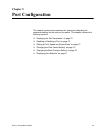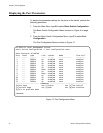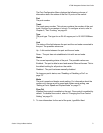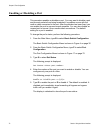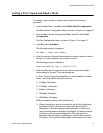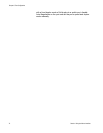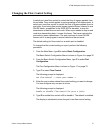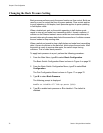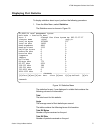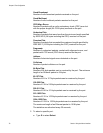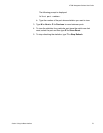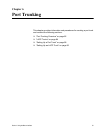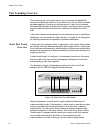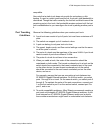
Chapter 5: Port Configuration
76 Section I: Using the Menus Interface
Changing the Back Pressure Setting
Back pressure performs much the same function as flow control. Both are
used by a port to control the flow of ingress packets. Flow control applies
to ports operating in full-duplex; back pressure applies to ports operating
in half-duplex mode.
When a twisted pair port on the switch operating in half-duplex mode
needs to stop an end node from transmitting data, it forces a collision. A
collision on an Ethernet network occurs when two end nodes attempt to
transmit data using the same data link at the same time. A collision causes
the end nodes to stop sending data.
When a switch port needs to stop a half-duplex end node from transmitting
data, it forces a collision on the data link, which stops the end node. After
the switch is ready to receive data again, the switch stops forcing
collisions. This is called back pressure.
To apply back pressure to a port, perform the following procedure:
1. From the Main Menu, type B to select Basic Configuration.
The Basic Switch Configuration Menu is shown in Figure 4 on page 32
2. From the Basic Switch Configuration Menu, type P to select Port
Configuration.
The Port Configuration Menu is shown in Figure 17 on page 70.
3. Type B to select Back Pressure.
The following prompt is displayed:
Enable or Disable all link up ports (E/D)>
4. Type E to enable back pressure or D to disable it. The default is
disabled.




